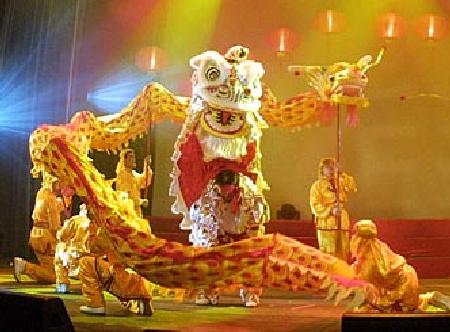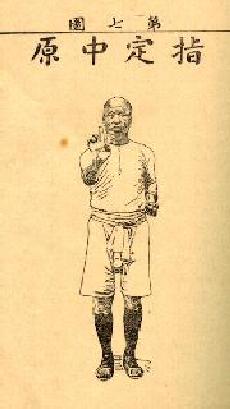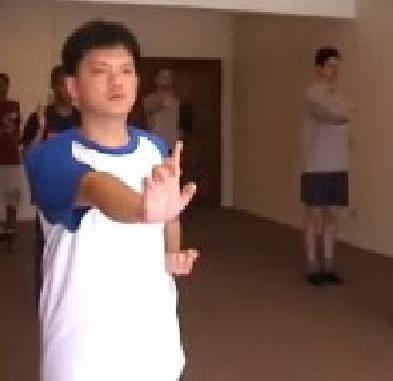February 2006 (Part 1)
SELECTION OF QUESTIONS AND ANSWERS

Question 1
I want to find the secret of healing — miracle healing using the power of the mind. I have many experiences where healing occurs instantaneously but at times healing does not occur. Could you throw me some light?
— Eddy, Malaysia
Answer
Although it is called miracle healing, it follows natural laws, except that these laws are not known to most people.
To understand miracle healing, it is necessary to have an appropriate conceptual framework. The conceptual framework used by most people today, consciously or unconsciously, is not appropriate here, although it may work wonders in other areas.
This conceptual framework of most people is “objective” and “scientific”. I use inverted commas here because it is “objective” and “scientific” only in conventional sense. If we go deeper, such as using the paradigm of quantum physics, it is not objective and not scientific.
A good conceptual framework to use to understand miracle healing is that of the classical Chinese who view the world as manifestations of “jing”, “qi” and “shen”, or “physical form”, “energy” and “spirit” (or “mind”). Its understanding is elite, which means most Chinese, now and in the past, may not know the concept although they have heard of the terms.
It is the spirit that is the real person. It is the spirit that has energy and a physical body, and not the body that has energy and a spirit. The spirit is “permanent”, whereas the energy and the physical body are constantly changing, although the change is usually invisible to the naked eye.
Hence, when a person is sick, it means his spirit is sick. The cause of the sickness as well as its manifestations may be physical or energetic. For example, virus may attack his liver causing it to be physically hardened, or the energy that digests sugar may be blocked from doing its work resulting in diabetes, which is a functional, i.e. energetic disorder. But it is the person, i.e. the spirit, that is sick. The hardening of the liver and the inability to digest sugar are just symptoms of sickness — a fact that conventional doctors today do not appreciate, and therefore their treatment only results in relieving symptoms.
For convenience of understanding, treatment may be classified into three approaches — via the body, via energy and via the spirit. If bacteria attack a person, and when there is an antibiotic, taking the antibiotic to kill the harmful bacteria is an effective way of treatment. If he lacks certain chemicals essential for producing the energy needed for healthy living, taking in the chemicals is an effective way to overcome the functional problem.
When we understand that a person is actually a spirit having energy and a body, these two treatment approaches are “external”. The “internal” approach is via the spirit. When the spirit is very strong, it can overcome sickness by various means. It may, for example, by an act of will clear the bacteria, or restore the energy flow to digest sugar. Most people are unable to do this because their spirit is weak and untrained.
A powerful spirit may do this not only for himself but also for other persons. An extremely powerful spirit like the Buddha or Jesus Chris can help patients to recover instantly. A chi kung master, who is much, much less powerful that the Buddha or Jesus but more powerful than ordinary persons, may help patients to recover from sickness that conventional medical thinking regards as “incurable”.
But if the sickness is slight, like a small pain at the skin level or feeling nervous about a coming event, a person trained in spiritual cultivation may overcome it instantly.
Question 2
I was wondering if you could let me know whether going to learn from you based on the items below is possible. I have been training Hung Kuen for almost 12 years. I am looking for specific training in Hung Kuen as follows.
— Chong, Singapore
Answer
The best way for you to learn from me to realize your kungfu aspirations is to attend my Intensive Shaolin Kungfu Course .
This course does not answer all your immediate needs mentioned below but provides a sound foundation for you to realize these and other needs. It will make your 12 years of kungfu come alive.
Below are the answers to the points you have raised.

Kungfu sparring in an Intensive Shaolin Kungfu Course in Sungaoi Petani
Question 3
To understand and apply the Twelve Hung Kuen Bridges.
Answer
The course does not deal with the Twelve Bridges in particular, but will give you a philosophical understanding and direct experience of internal force so that you can appreciate the Twelve Bridges or any other internal arts as you practice them yourself.
As an analogy, we do not teach you how to write specific letters for different applications, but we teach you how to write well. An application letter for a job in a bank will be written differently from an application for a loan, or for a sale presentation.
When you have the skills of writing, you still need to find out appropriate information relevant to your specific application. But when you have the information you will write the application well. On the other hand, other people may have a lot of information, but if they do not have writing skills, they would be unable to write application letters well. Moreover, you will be able to write not just application letters, but any letters and any documents.
The onus of my courses is to teach skills. When you have kungfu skills, you can apply them to any style of kungfu effectively. Most other people know a lot of techniques but little or no skills. Hence they may perform their kungfu beautifully but are unable to apply it effectively. The skills you learn are not only applicable to kungfu, but also to your daily life.
Question 4
To learn and apply Hung Kuen footwork in offensive and defensive applications.
Answer
You will learn basic footwork which you can apply in any style of kungfu, including Hung Kuen.
Question 5
To understand and apply Wong Fei Hong's concept of the Ten Lethal Hands.
Answer
The Chinese term (in Cantonese) is "Sap Tok Sau". The word "tok" has a few different meanings, including "lethal" or "poisonous". But here "tok" means "specialized" or "mastery". It is written differently from "tok" meaning "lethal" or "poisonous". So Sap Tok Sau is "Ten Specialized Techniques" and not "Ten Lethal Hands" as it is commonly mistaken to be.
The second point is that Sap Tok Sau, if I can remember correctly, were not invented by Wong Fei Hoong, but by Kwan Tuck Heng, the famous Hong Kong Cantonese movie star who acted in many movies as Wong Fei Hoong. He was sometimes called Wong Fei Hoong the Second.
Another point many people may not know is that Kwan Tuck Heng's kungfu is not Hung Kuen, which is the style Wong Fei Hoong was famous for, but White Crane. Nevertheless, as Kwan Tuck Heng had acted in so many movies as Wong Fei Hoong and had used Hung Kuen so frequently in the movies over the years that he became an expert in it.
I read a document about Sap Tok Sau in my young days. In fact it inspired me to create from my own techniques some useful combat sequences for my own use in sparring and fighting. Shaolin Wahnam members today have to thank Kwan Tuck Heng because his concept of Ten Specialized Techniques helped in the evolution of our combat sequences, which have proved to be very useful in our combat training.
Ten Lethal Hands or Ten Specialized Techniques are not taught in the Intensive Shaolin Kungfu Course. Now I cannot remember what these ten techniques are. But the course will give you the foundation and training that enable you to understand and apply these ten techniques or other techniques from other kungfu styles well. If you show me these techniques during the course, I can explain to you their significance and application.

An illustration from a kungfu classic showing the famous Hoong Ka master, Sifu Lam Sai Weng, demonstrating a Hoong Ka pattern called “One Finger Stabilizes Empire”, which is similar to “One-Finger Shooting Zen”, considered a treasure by many Shaolin students in Shaolin Wahnam.
Question 6
To understand the deeper concepts of Hung Kuen as a fighting form.
Answer
Yes, after the course you will certainly understand Hung Kuen or any kungfu style better. This in fact is one of the aims of the course. More significantly, you will have direct experience of many of the concepts or principles you have studied, such as developing internal force in stance training, the advantage of using stances in combat, and kungfu training as a process of spiritual cultivation.
But I would like to point out your use of the term “deeper”. It is relative. The Intensive Shaolin Kungfu Course is basic. The things you learn in the course are “elementary” when compared to what we offer in our programme. Yet, many people who have attended my intensive courses, including those who have been teaching kungfu or other martial arts for more than 20 years, have expressed amazement at the depth of the course, often on the very first day itself.
Actually some of those who have attended the Intensive Shaolin Kungfu Course and the Intensive Taijiquan Course have proposed that we change the name to Masters' Shaolin Kungfu Course and Masters' Taijiquan Course, although we consider the courses basic.
Imagine, for example, a Hung Kuen master who has been teaching One-Finger Shooting Zen (called “One-Finger Stabilizes Empire” in Hung Kuen) for many years but has no experience of internal force. Then, when he is taught this art from scratch at the course, he feels unmistakably internal force swelling in him. It is inevitable he considers the teaching very deep.
Imagine another master who has practiced an internal art for years is shown some simple movements to generate a chi flow. The resultant internal force generated is so overwhelming that with tears in his eyes and looking at his palms, he murmurs to himself, “20 years, 20 years, 20 years...” These are real life examples. The internal art master was so touched that I did not ask him whether he meant he had wasted 20 years practicing for nothing, or he had searched for 20 years to find this.
Of course they had not wasted their previous training. It was because of their previous training that they had such good results in my intensive courses. My teaching is like a key; it opens up what they have been building previously for years. Hence, it is often the case that the more experienced a person is to my intensive courses, the more benefits he gets.
Question 7
To understand Hung Kuen grappling hands.
Answer
I wonder whether by “grappling hands” you mean "qin-na', or the specialized art of gripping vital points. Qin-na is an advanced art in our school, and is not taught as such in an Intensive Shaolin Kungfu Course. The emphasis of combat application at the course is on striking and kicking, with some practice on holds and throws. Some aspects of qin-na may be mentioned in passing, but not in depth.
But if you mean ordinary grappling and holding, it is included in the course, otherwise the course would not be comprehensive. All the four categories of attacks — striking, kicking, felling and gripping — are dealt with. You will also learn basic uses of the Tiger-Claw.
Question 8
I am trained in Gong Tze Fook Fu, Tiger-Crane, Moi Fa Fist Form, Lau Ga Fist Form, Lau Ga Pole and Hung Kar Butterfly swords
Answer
These are advanced sets. What you learn at the course is more elementary.
This concerns a big problem of most kungfu practitioners today, and many of them are not aware of the problem.
Most people have learnt many kungfu sets, and the techniques in these sets are advanced. But they have little or no skills in applying even simple techniques. They do not know what to do when a Boxer, a Kick-Boxer, a Karate or Taekwondo practitioner attacks them with straight-forward punches or kicks. They would not know how to counter if an opponent grips their arm or attempts to throw them onto the ground.
It is precisely to help them overcome this big problem, beidess getting other benefits, that I offer my Intensive Shaolin Kungfu Course, and for those who practice Taiji dance, my Intensive Taijiquan Course. The intensive courses will enable their kungfu to come alive.
Michael Chow, who has won a few international wushu competitions, made a revealing point in our Shaolin Wahnam Discussion Forum. When Michael saw Emiko and David, who are also former international wushu champions, practiced our Basic Combat Sequence Number 1 over and over again, he was amazed and inspired. He suddenly realizes that was what he had been searching for.
You would be surprised to know what our Basic Combat Sequence Number 1 is. It consists of an attacker attacking with a thrust punch, which is called “Black Tiger Steals Heart”, and a defender responds with a single tiger-claw, called “Single Tiger Emerges from Cave”. This is repeated twice. That is all — as it outwardly appears.
It is a fashion for many kungfu practitioners to talk about training the basics, but they do not really know what that means. If they knew, they would not have spent years after years just learning kungfu sets after kungfu sets, yet not knowing how to defend against a basic attack like a punch or a kick. Many people who practice Gong Tze Fook Fu, Tiger-Crane, or Moi Fa Fist Form, for example, do not know what the patterns in the sets are for; they merely perform them years after years.
The Intensive Shaolin Kungfu Course will enable them to understand and apply them. But we do not start with advanced patterns. We start with simple punches and kicks. We progress very fast. By the time we come to Combat Sequences 13 to 16 towards the end of the five-day course, the patterns are quite advanced. They involve attacks that even some masters who have been teaching for many years may not know how to counter, like being pressed to the ground with the elbow at the risk of dislocation, or being thrown over the shoulder while your two arms are being held.
Those who have the opportunity to attend my Special Shaolin Kungfu Course, which is by invitation only, have surpassed the stage of merely learning kungfu sets. They have progressed to an understanding of patterns from sets that they may not even have learnt before, and they can apply these patterns for combat. In such courses held recently in England and Canada, I posted to course participants questions of combat application that masters of other martial systems have asked me. The course participants could provide effective counters quite readily.

Calvin and other course participants at an Intensive Shaolin Kungfu Course practicing One-Finger Shooting Zen to develop internal force.
Question 9
I breath forcefully into my abdomen in Abdominal Breathing, forcing my abdomen up and causing my dan tian to rise. I feel pain in my abdomen.
— Tom, UK
Answer
You have practiced wrongly. In Abdominal Breathing, what you breathe into your abdominal dan tian is energy, not air. Air remains in your lungs as your lungs are air-tight. It is the energy that goes down to the dan tian. Many people do not realize this. Hence, they try to force their abdomen up, as you did, which is wrong.
It is very important to be relaxed in Abdominal Breathing, and no force should be used. Actually the abdomen rises just gently, so gently that it may not be noticed.
You should stop your Abdominal Breathing and do some remedial exercise instead. “Lifting the Sky” is a good remedial exercise. Like Abdominal Breathing, you should breathe gently. Remember it is energy, and not air, that is involved in your chi kung practice. Practice “Lifting the Sky” about 30 times in the morning and in the evening every day. You should overcome your problem in a few weeks.
LINKS
Selected Reading
- White Snake Shoots Venom in Picture Series
- Green Dragon Shoots Pearl in Picture Series
- Secrets of Sparring Methodology
- The Movements of Cloud Hands
- Experiencing the Process of Composing a Kungfu Set
- A Glimpse into a VIP Taijiquan Course
